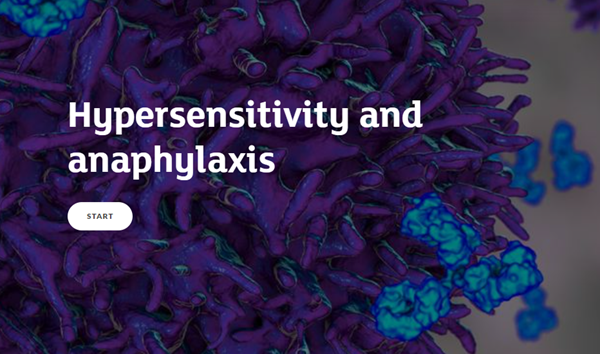Hypersensitivity and Anaphylaxis
Response to Travis
Travis, this is an excellent post. When one suspects anaphylaxis cases in patients, Tanno, Alvarez-Perea, and Pouessel (2019) recommend performing cardiovascular resuscitation and administering medications like epinephrine to reduce the allergic response, provide oxygen support and administer intravenous antihistamines to reduce inflammation of breathing passages. Besides, one can also use beta-agonists like albuterol, which is essential in relieving breathing symptoms (Hypersensitivity and Anaphylaxis).

Frequent anaphylactic reactions require long-term treatment, which involves the provision of immunotherapy to reduce potential allergic reactions in the future (Tanno, Alvarez-Perea & Pouessel, 2019). However, de Silva et al. (2021) advise people to restrain themselves from allergic triggers and always carry autoinjectors containing self-administered epinephrine in cases where treating the underlying immune system condition is challenging. The autoinjectors efficiently administer single-dose injections when pressed against the thigh. Therefore, nurses must take appropriate measures to prevent anaphylaxis from worsening and attain better patient outcomes (Hypersensitivity and Anaphylaxis).
References
de Silva, D., Singh, C., Muraro, A., Worm, M., Alviani, C., Cardona, V., … & European Academy of Allergy and Clinical Immunology Food Allergy and Anaphylaxis Guidelines Group. (2021). Diagnosing, managing and preventing anaphylaxis: a systematic review. Allergy, 76(5), 1493-1506. https://doi.org/10.1111/all.14580
Tanno, L. K., Alvarez-Perea, A., & Pouessel, G. (2019). The therapeutic approach of anaphylaxis. Current Opinion in Allergy and Clinical Immunology, 19(4), 393-401.10.1097/ACI.0000000000000539
Response to Martin
Martin, your post on hypersensitivity and anaphylaxis is informative. Type I hypersensitivity results from exposure to antigens and produces an immediate body response by producing the antibody IgE (Basu & Banik, 2018). It is triggered by bee stings, dust, and allergic asthma, resulting in symptoms like rush, wheezing, and edema. Consequently, type II hypersensitivity involves IgE and IgM antibodies and causes cytotoxic reactions that damage body cells and tissues (Dispenza, 2019) (Hypersensitivity and Anaphylaxis).
Its triggers include drugs like penicillin, and methyldopa, which cause hemolytic anemia and neutropenia. Type III hypersensitivity reaction occurs due to antigens and antibodies forming complexes on the skin (Dispenza, 2019). Drugs like antivenins and insect stings trigger it, which causes serum sickness, lupus, and rheumatoid arthritis. Lastly, Basu and Banik (2018) observe that type IV hypersensitivity reactions are mediated by T cells. Poison ivy, antibiotics, and anticonvulsants trigger it. These hypersensitivity reactions are fatal, hence require immediate treatment.
References
Basu, S., & Banik, B. K. (2018). Hypersensitivity: an overview. Immunol Current Research, 2(1), 105. https://www.rnlkwc.ac.in/pdf/study-material/zoology/hypersensitivity-an-overview.pdf
Dispenza, M. C. (2019, November). Classification of hypersensitivity reactions. In Allergy & Asthma Proceedings (Vol. 40, No. 6). https://allergolyon.fr/wp-content/uploads/2020/08/0.4-Classification-of-hypersensitivity-reactions-2019.pdf
